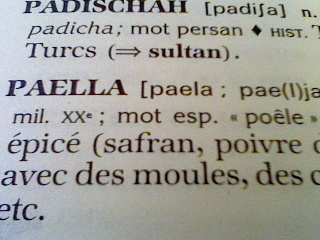For professional translations, visit timtranslates.com.
Most of my readers who are translators have probably come across the WordReference dictionary toolbar buttons. You can find them here.
These toolbars open a word you have selected in a new window.
I don’t use the version of the buttons now available on the WordReference site, but an older version. I prefer the older versions because they pop up a small form if you have no text selected. Most of the time we’re looking up words in our source text, not words we have open in our browser, so we want a window to type our word in. Also, my version (I can’t remember whether that’s how I downloaded it, or whether I adapted the code myself) opens up in the current tab, not in a new window. Much more practical, I find.
Below are the WordReference buttons I use (only for the languages I work with). If you have Firefox, you can just drag them to the toolbar. If you use Internet Explorer, you should stop doing so, but if you really wish to continue with Internet Explorer, follow the complicated instructions here, however, I seem to remember finding that my buttons don’t work in Internet Explorer.
English definition
Spanish definition (RAE)
French-English translation
English-French translation
Spanish-English translation
English-Spanish translation
With these buttons, if you have selected text, it will search for the selected text; if not, a window asks you to enter the search term.
But you don’t have to use only buttons that people give you. You can use the above to create your own for any online dictionary where the search term appears at the end of the URL.
Let’s take the new Catalan dictionary (DIEC2) as an example. Even if you don’t work with Catalan, follow this step-by-step guide, then just delete it from your toolbar afterwards and apply the same principle to other online pages.
- Go to the dictionary’s main search page.
- Type in the word prova.
- The toolbar should now show “http://dlc.iec.cat/results.asp?txtEntrada=prova&operEntrada=0”.
- In this case our search term does not appear right at the end. However, anything appearing after an ampersand (&) is usually just adding extra information regarding the presentation of a page, and can usually be removed. Remove “&operEntrada=0” from the link and press enter.
- The URL still works without that information. Now drag the current tab to the toolbar (you need to have more than one tab open to do this, so press CTRL+T if you only have one tab open).
- We now need to adapt this link so it doesn’t always go to the definition for prova but instead to the definition of whatever word we want.
- Let’s use as our template the Spanish-English translation button that I gave above. Drag it to the toolbar if you have not already done so. By opening up the properties of the button you can obtain the location, which is as follows: javascript:Qr=document.getSelection();if(!Qr){void(Qr=prompt(‘Translate%20to%20English:’,”))};if(Qr)location.href=’http://www.wordreference.com/es/en/translation.asp?spen=’+escape(Qr)
- All we need to do is replace the reference to the WordReference site with the URL from the DIEC site. Copy the above into Notepad, then replace everything between the final set of single quotes with “http://dlc.iec.cat/results.asp?txtEntrada=” (the URL we found after searching in the DIEC, but with the search term removed from the end, since this will be variable).
- You may also want to change where it says “Translate%20to%20English” to something more appropriate for this button, such as “Catalan%20definition” (the “%20” is just a space bar).
- Now copy this to the clipboard (CTRL+>C), then in Firefox right-click on the DIEC button you have just added, click on properties, and delete everything in the “Location” field, replacing it with the contents of the clipboard (press CTRL+V).
- Click on Save Changes, then test your new button.
Of course, it’s a lot easier if someone else has done the work for you, so here are a few others I also use. Please post any of yours in the comments!
Merriam-Webster English
GREC Catalan dictionary
dict4.com Spanish<>English
French-English search in Quebec terminology database
In a separate post, I will explain how to add buttons to search in Google Books. Watch this space!<

